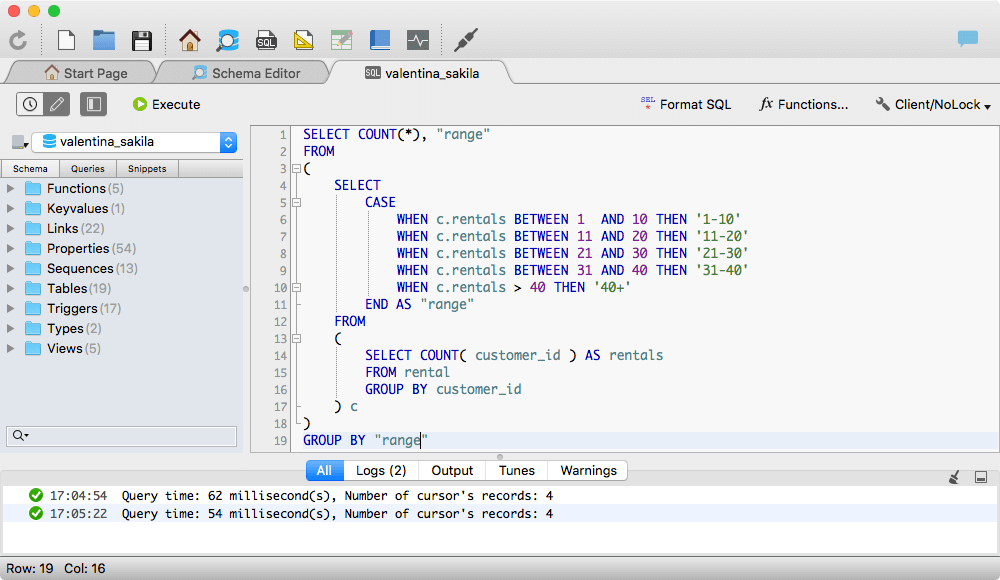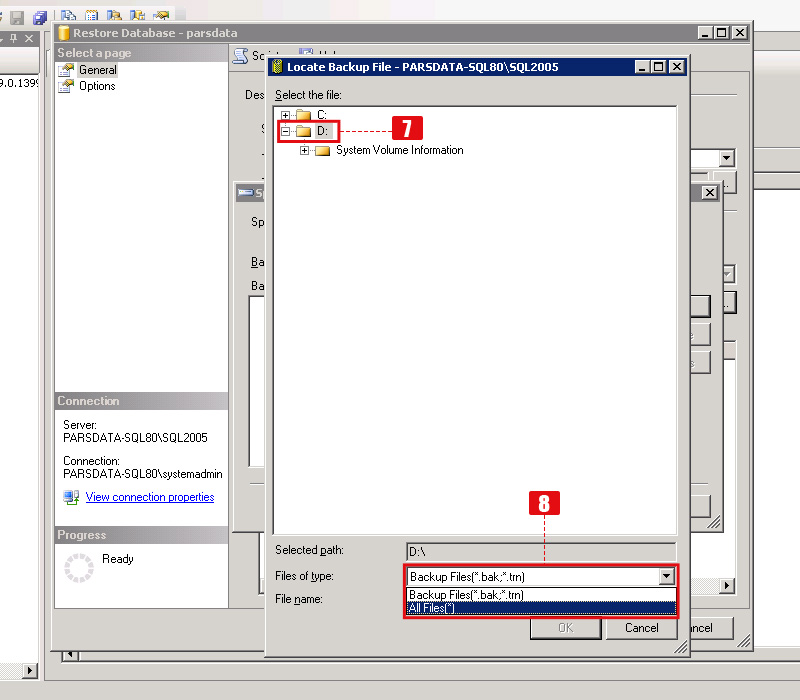
For the rest of this post, I’ll refer to this connection as con with one “n” (with the exception of the gif below, where I gave it the lengthier name conn_isolated). This seems to be a special case other connections seem to work without extra fussing. Note that unlike in the tbl() example above, you have to pull out the connection from the src_memdb() using $con. sql file with the following code: - !preview conn=src_memdb()$con
#Open sqllite database with sql studio code
If you’ve run the previous dplyr/dbplyr code chunk in the same session, you’ll have both the connection and the data you need to test out this preview function yourself! Just create a. I’d always blindly deleted the header, but it turns out that all this time, RStudio had been trying to tell me that I can actually preview queries in RStudio! If you supply it with a working database connection (no spaces around the =!) and click the Preview button, a SQL Results tab pops up next to the Console with the query results. sql file in RStudio, it automatically populates the file with the following code: - !preview conn=DBI::dbConnect(RSQLite::SQLite()) (Thank you to RStudio Community posts such as this one for enlightening me.) These two methods also have the added benefit of SQL code with syntax highlighting. It turns out that within RStudio, there are actually (at least) two other methods of previewing SQL queries. # … with 2 more variables: ts_diameter, hu_diameter Up to now, I’d only used dataframe-style previews of query results, such as in the example below: library(dplyr) I’m glad I was forced to venture out of my RStudio comfort zone, but I’ve begun to discover that some of the features I love about RubyMine actually exist in RStudio as well. helpful hints/errors when something’s wrong with my query.auto-formatting for SQL (cmd + option + l is my favorite shortcut ever in RubyMine).syntax highlighting (code coloring) for SQL.Over time, I found my own reasons for using RubyMine (or really, any other IDE with advanced SQL support): That said, this flow works pretty well for us. Some of the peculiarities are due to historical accidents – for example, many of the early developers at the company used Ruby, so RubyMine also became the IDE of choice for working with SQL. This workflow is something I’ve largely absorbed from my coworkers. Do complex manipulations or visualizations of the data in R/RStudio.Bring the data into R/RStudio by calling DBI::dbGetQuery() or a similar function.Draft and refine SQL queries in the Rubymine IDE.Just load the data in Python then write your queries in DB Browser.My typical workflow currently looks like this: As for writing actual queries, your method of writing the query in Python and then exporting to Excel is an awful way of doing this.
#Open sqllite database with sql studio download
You don't need to download an excel file every time you load, just use the Sheets API.

I feel inefficient.īased on what you've written here, you should start by extracting the data more efficiently. Using VS Code, MySQL/SQLite3, Python, and Excel. Not sure best way to import data every week. Trying to learn SQL through personal data I've been collecting. If you want to view the contents, you could use DB Browser for SQLite. If it's not encrypted, this site implies that they are SQLite files.


There's plenty of programs capable of reading it. Notesv7.storedata is an SQLite database file. Please help - lost data in notesv7.storedata file I can view all expected user data in there and can't see any sign of a corruption. I can open the backup database using DB Browser for SQLite () and it doesn't complain or show any errors.


 0 kommentar(er)
0 kommentar(er)
